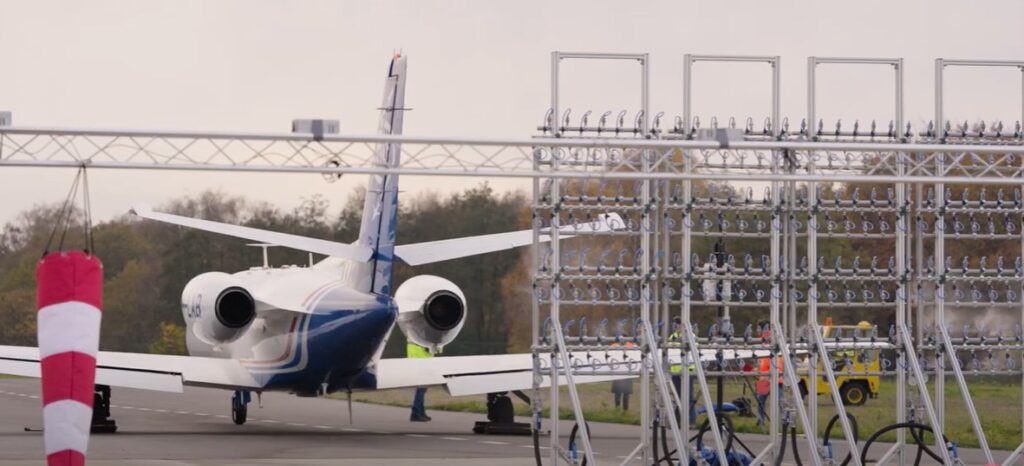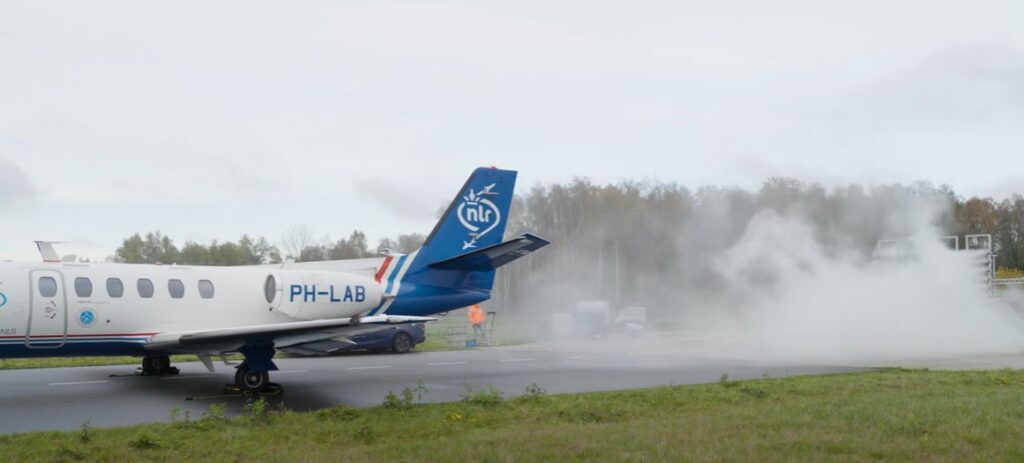December 2023
Amsterdam Airport Schiphol is working hard to reduce the amount of ultrafine particles on the apron and in the surrounding area. For instance, through electrification of ground handling equipment. But the airport also goes off the beaten track with experimental research and to learn from solutions in other sectors that have potential for airports. One of those possible solutions is to use water drops to remove ultrafine particles from the air. As part of the TULIPS programme, Schiphol and Netherlands Aerospace Center (NLR) therefore conducted a trial with an innovative water screen. Join the TULIPS Workpackage 7 team at Airport Twente for a test day!

Improve local air quality
Ultrafine particles are released when aircraft and diesel engines are used. We still know very little about it, but we do know that it is potentially harmful to health. It is important for airports to reduce the amount of ultrafine particles. One of the work packages of the TULIPS-programme therefore focuses on reducing ultrafine particles, specifically with water drops.
A screen of water drops against ultrafine particles
The idea of using water drops to remove ultrafine particles from the air comes from the construction and mining industry. To prevent inconvenience for the environment, they use spraying to remove (ultra)fine particles from the air. At Schiphol, we already conducted a trial in 2022 with a water cannon to achieve the same result. It worked to a certain extent, but more research was needed. That is why we now conducted a trial with a special water screen that has been further developed on the basis of the previous trial. The idea is that the ultrafine particles attach themselves to the droplets, causing them to fall to the ground.


Analysing the data
That’s the theory, but can it work? To this end, the TULIPS Workpackage 7 team travelled to Airport Twente, where space was available for the special test set-up. Thanks to the test, we have now collected a lot of measurement data. By installing additional sensors, we were also able to better filter out side effects, such as the weather and the outside air. In the coming months, we will be analysing the data together with NLR. We expect to deliver the research report as one of the TULIPS deliverables later this year.
Direction of solution
If we find that the theory works, the next step would be to translate the innovation into a workable solution for airports. Applying it during take-off for instance, to reduce ultrafine particles for the environment. The use of this technology in the busy and complex platform operation still requires further development. But in this way, we are taking small steps in gathering knowledge, enabling us to tackle ultrafine particles.
Learn more
If you want to know more about ultrafine particles at Schiphol, check the Schiphol website
